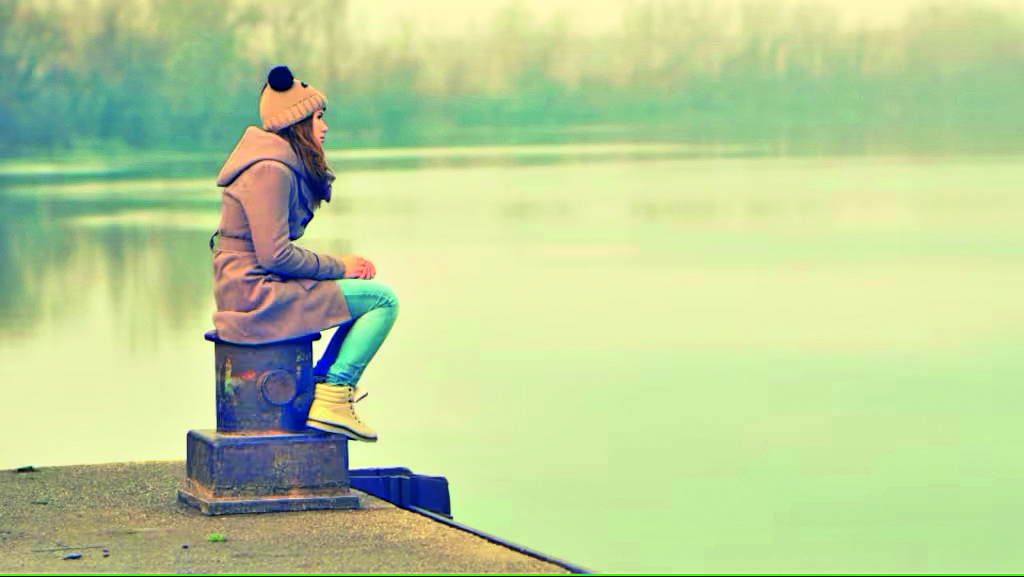
Creative isolation has long been a sanctuary for artists, writers, and thinkers — a time and space where they could retreat from the demands of society to cleanse their minds and rejuvenate their creative processes. Historically, creative isolation was a deliberate choice, often romanticized as a path to enlightenment and artistic breakthrough. From Thoreau’s solitude at Walden Pond to Virginia Woolf’s room of her own, these periods of seclusion were integral to the creative process.
Sanya Chandel, a young artist says that she does not need to isolate herself to get the creativity flowing because her entire existence and experience is bound to her creativity. “I’m constantly in a state of creativity. When it comes to creating things, I enter a zone where I’m completely immersed in creating so it might not be my intention but I end up sort of being isolated from other things,” she explains.
Solitude & Creativity
For centuries, artists and writers have turned to isolation to cultivate their craft. The 19th and early 20th Century saw many creators who deliberately isolated themselves to focus on their work. Famous writer-philosopher Henry David Thoreau withdrew to Walden Pond for two years to write and reflect. Thoreau’s experiment in self-reliance and simplicity was not just about escaping society; it was about stripping away distractions to connect with the essence of life and creativity.
Creative Isolations
In contrast to the deliberate and often romanticized isolation of the past, today’s creative isolation is a response to the overwhelming pace of modern life. The digital age has brought with it a constant stream of information, notifications, and social media pressures. As a result, many contemporary artists and writers are seeking isolation not just as a creative catalyst but as a form of brain detox.
Psychology Behind Creative Isolation
The psychological benefits of creative isolation are well-documented. Solitude can enhance focus, reduce stress, and allow for deep work — states in which creative ideas can flourish. However, the effectiveness of isolation as a brain detox depends on the individual and their approach to solitude.
For some, like the writers and artists of the past, isolation can be a source of inspiration and renewal. By disconnecting from the world, they can reconnect with their inner thoughts and ideas. This kind of creative isolation often leads to significant breakthroughs.
For others, particularly in the modern context, isolation can be challenging. The sudden removal of digital distractions can lead to withdrawal symptoms. The brain, accustomed to constant stimulation, may initially resist the quiet and solitude, leading to feelings of anxiety or restlessness.
Lily Watkins, a young artist from London would isolate herself at lunchtime to get on with her artwork. Lily finds social settings a bit overwhelming. “I hate doing artwork in front of people. I’ve found it harder recently to get time to myself. As a result, I haven’t been doing much artwork. The current state of the world is overwhelming. The urge to draw and create gets lost when everything feels blue, and I have been blue for a while now.”
Future Trends
As the demands of modern life continue to increase, in future, we may see more structured forms of isolation that combine elements of traditional retreats with modern brain detox techniques.
For example, creative isolation retreats that incorporate mindfulness practices, physical exercise, and digital detoxes may become more popular. These retreats could offer a holistic approach to brain detox, addressing not just the creative needs of individuals but also their overall mental and physical well-being.
While the practice of creative isolation has changed over time, its core purpose remains the same: to provide a space where the mind can detox, focus, and flourish. Whether through historical methods or modern-day retreats, artists and writers will continue to seek isolation as a means of nurturing their creativity and maintaining their mental health in an increasingly connected world.
“The current state of the world is overwhelming. The urge to draw and create gets lost when everything feels blue.” — Lily Watkins, a young artist
“When creating something, it might not be my intention but I end up sort of being isolated from other things.”— Sanya Chandel, artist
